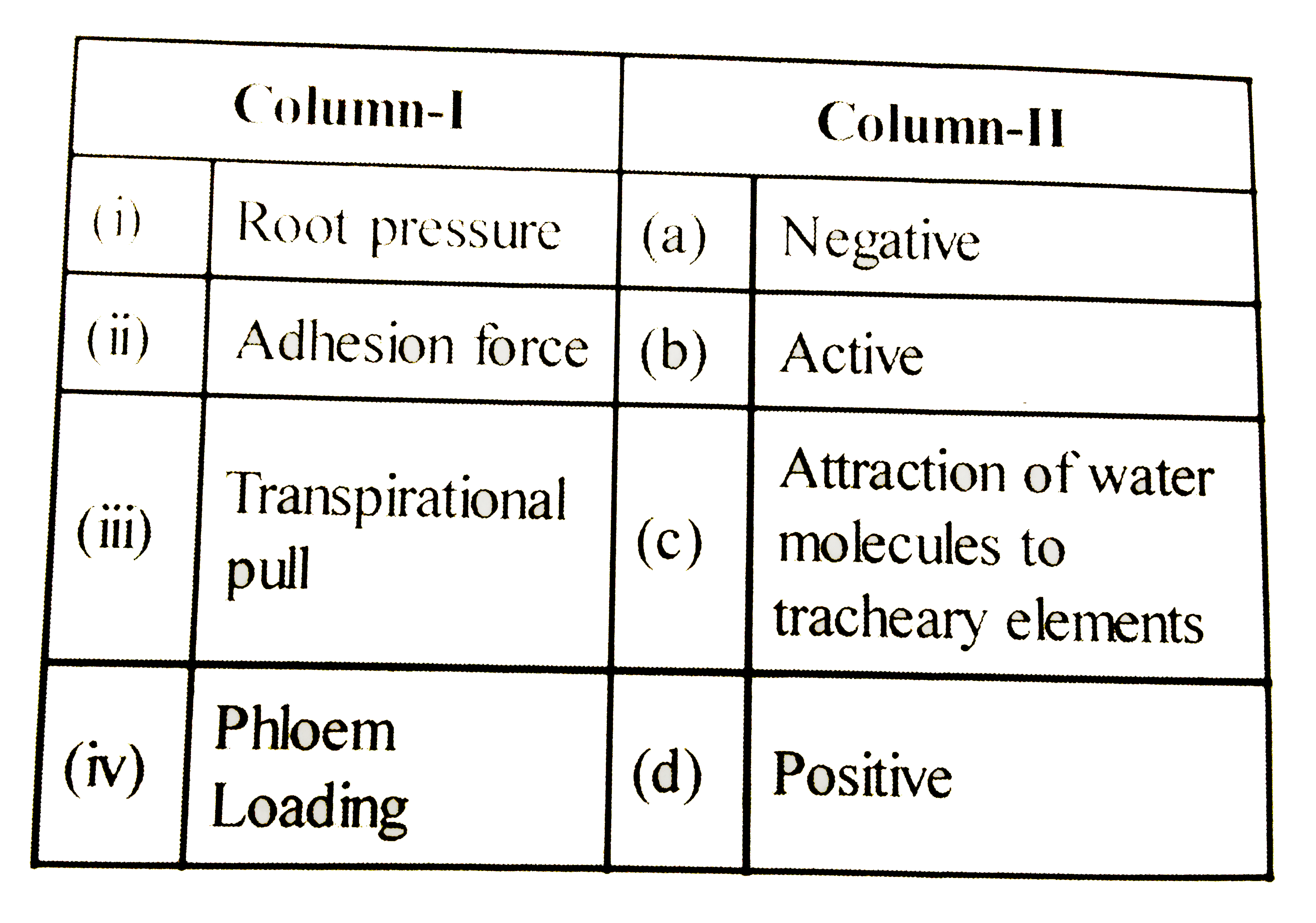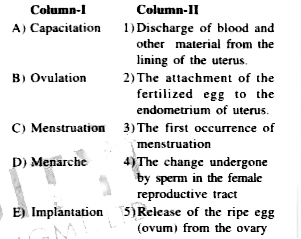Match the method of concentration of the ore in column I with the
ore in column II and select the correct altemate.
Column IColumn II(a)Leaching.(p) Copper pyrite(b)Calcination.(q) Siderite.(c)Froth floatation(r) Bauxite.(d)Magnetic separation.(s) Chromite.
(a)(b)(c)(d)sqpr
(a)(b)(c)(d)rqps
(a)(b)(c)(d)pqrs
(a)(b)(c)(d)qrps
The correct Answer is:2
To solve the question of matching the methods of concentration of ores with the respective ores, we will analyze each method and identify the correct ore associated with it.
1. Leaching (a):
- Leaching is a process where soluble materials are separated from insoluble materials. It is commonly used for ores like bauxite, which is an ore of aluminum.
- In the leaching process, bauxite is treated with concentrated sodium hydroxide (NaOH) to form sodium aluminate, while impurities are filtered out.
- Match: Leaching → Bauxite (r)
2. Calcination (b):
- Calcination involves heating carbonate ores in the absence of air to convert them into oxides. This process is typically used for ores like siderite (FeCO3).
- When siderite is calcined, it decomposes to form iron oxide (FeO) and carbon dioxide (CO2).
- Match: Calcination → Siderite (q)
3. Froth Flotation (c):
- The froth flotation method is used primarily for the concentration of low-grade sulfide ores. It is effective for ores such as copper pyrite (CuFeS2) and galena (PbS).
- In this process, the ore particles are separated based on their different degrees of wettability with water and frothing agents like pine oil.
- Match: Froth Flotation → Copper Pyrite (p)
4. Magnetic Separation (d):
- Magnetic separation is used for ores that possess magnetic properties. Chromite (FeO·Cr2O3) is one such ore that can be separated from non-magnetic impurities using this method.
- The magnetic properties of chromite allow it to be effectively separated from siliceous impurities.
- Match: Magnetic Separation → Chromite (s)
Final Matches:
- (a) Leaching → (r) Bauxite
- (b) Calcination → (q) Siderite
- (c) Froth Flotation → (p) Copper Pyrite
- (d) Magnetic Separation → (s) Chromite
Summary of Matches:
- A → r
- B → q
- C → p
- D → s
- Leaching is a process where soluble materials are separated from insoluble materials. It is commonly used for ores like bauxite, which is an ore of aluminum.
- In the leaching process, bauxite is treated with concentrated sodium hydroxide (NaOH) to form sodium aluminate, while impurities are filtered out.
- Match: Leaching → Bauxite (r)
- Calcination involves heating carbonate ores in the absence of air to convert them into oxides. This process is typically used for ores like siderite (FeCO3).
- When siderite is calcined, it decomposes to form iron oxide (FeO) and carbon dioxide (CO2).
- Match: Calcination → Siderite (q)
- The froth flotation method is used primarily for the concentration of low-grade sulfide ores. It is effective for ores such as copper pyrite (CuFeS2) and galena (PbS).
- In this process, the ore particles are separated based on their different degrees of wettability with water and frothing agents like pine oil.
- Match: Froth Flotation → Copper Pyrite (p)
- Magnetic separation is used for ores that possess magnetic properties. Chromite (FeO·Cr2O3) is one such ore that can be separated from non-magnetic impurities using this method.
- The magnetic properties of chromite allow it to be effectively separated from siliceous impurities.
- Match: Magnetic Separation → Chromite (s)
- (a) Leaching → (r) Bauxite
- (b) Calcination → (q) Siderite
- (c) Froth Flotation → (p) Copper Pyrite
- (d) Magnetic Separation → (s) Chromite
- A → r
- B → q
- C → p
- D → s
Topper's Solved these Questions
- TEST PAPERSBOOK - RESONANCE ENGLISHCHAPTER - TEST PAPERSEXERCISE - PT-06
30 Videos
- TEST PAPERSBOOK - RESONANCE ENGLISHCHAPTER - TEST PAPERSEXERCISE - FST 01
30 Videos
- TEST PAPERSBOOK - RESONANCE ENGLISHCHAPTER - TEST PAPERSEXERCISE - PT-04
30 Videos
- SURFACE CHEMISTRYBOOK - RESONANCE ENGLISHCHAPTER - SURFACE CHEMISTRYEXERCISE - Section - 5
1 Videos
- TEST SERIESBOOK - RESONANCE ENGLISHCHAPTER - TEST SERIESEXERCISE - CHEMISTRY
50 Videos
Similar Questions
Match the column I with column II and select the correct option

View SolutionMatch the terms column-I with their functions in column-II and select the correct option

View SolutionMatch the terms column-I with their functions in column-II and select the correct option

View SolutionMatch column I with column II and select the correct answer :

View SolutionMatch column I with column II and select the correct option.

View SolutionMatch column I with column II and select the correct option.

View SolutionMatch column -I with column-II and select the correct option :-

View SolutionMatch the column-I with column -II and select the correct option :

View SolutionMatch the ores (column I) with the metals (column II):

View SolutionMatch the terms column-I with column-II and select the correct option

View Solution
